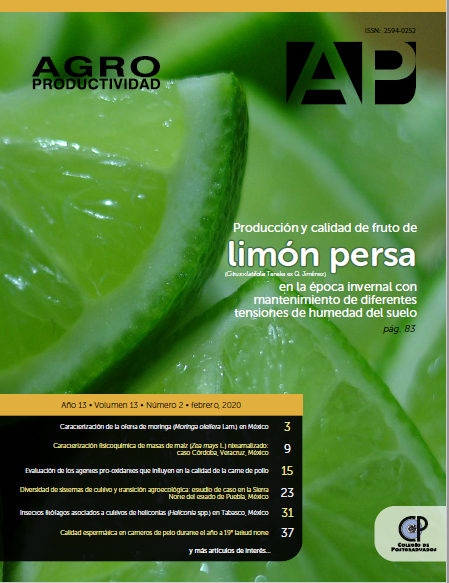Pregerminative seed treatments and seedling initial development of amashito chilli (Capsicum annuum L. var. glabriusculum)
Main Article Content
Keywords
Culture, conservation, gastronomy, rural economy, wild species.
Abstract
Objective: to evaluate pregerminative treatments of fresh and dried seeds and the
seedling initial development of amashito chilli (Capsicum annuum L.).
Design/methodology/approach: The experimental unit consisted of a Petri dish in
which five seeds were placed, two experiments were performed: in the first one freshly
collected seeds were used, in the second they were allowed to dry under shade for thirty
days. Three treatments were applied, and a control treatment, with three repetitions for
each one. Hydrochloric acid 3% (T1), sodium hypochlorite 3% (T2) and undiluted lemon
juice (T3) were used.
Results: Fresh seeds treated with sodium hypochlorite had the highest germination
values (93.3%). The treatment with hydrochloric acid (T1) showed 0% germination. The
dried seeds of T2 had a higher height (4.1 cm), the same treatment with dried seeds had
the lowest height (1.9 cm). The survival of plants was not affected by pregerminative
treatments, the values fluctuated between 77 and 100% in all treatments
Limitations on study/implications: The development of plants was monitored only in a
part of its life cycle.
Findings/conclusions: Sodium hypoclorite is the best treatment for seed germination.
In the case of hydrochloric acid, it is suggested to experiment with concentrations less
than 3% to promote seed germination. It is recommended to let dry the seeds for thirty
days and apply 3% sodium hypochlorite to stimulate germination.

